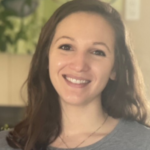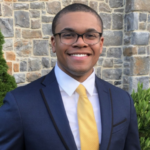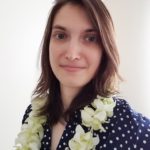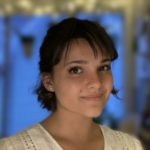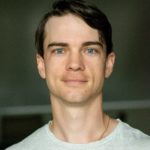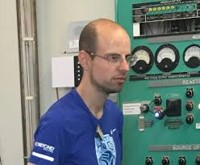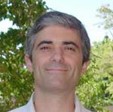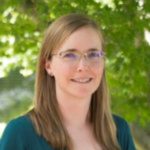09:45 – 10:00
Neutron-gamma angular correlations in fission
Click here for video recording of presentation
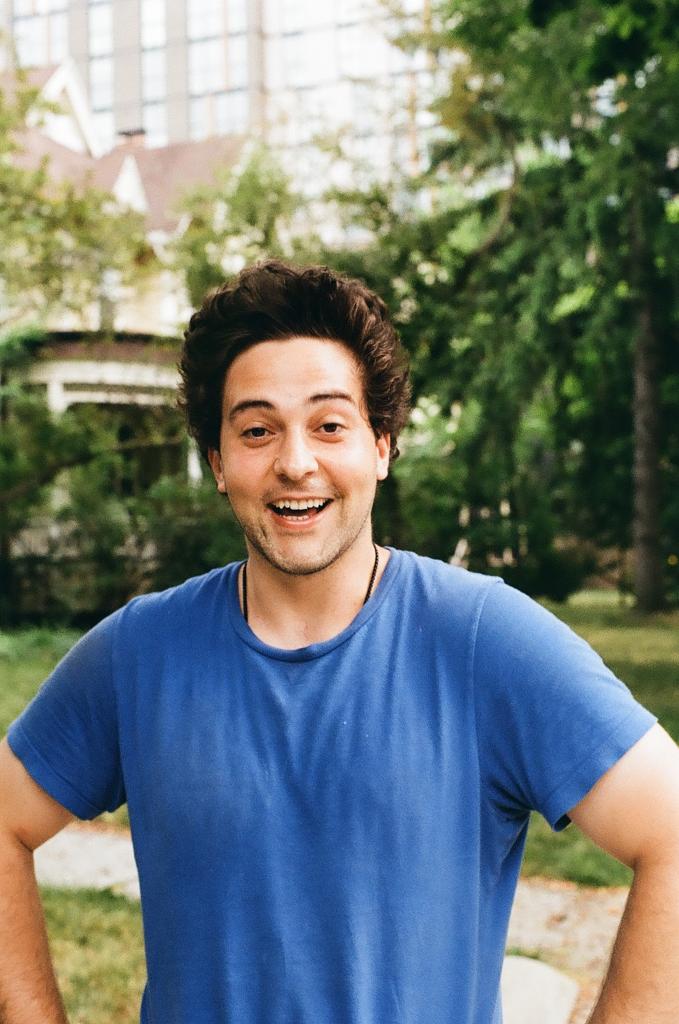
Stefano Marin
Graduate Student, University of Michigan
Stefano Marin collaborates with other students and researchers at the University of Michigan and at national laboratories on the advancing of knowledge of the nuclear fission process. Specifically, Marin focuses on the correlations between the neutrons and gamma rays emitted immediately following fission, which are of great importance to nonproliferation applications and can reveal previously unknown physics of the fission process.
10:00 – 1015
N-SpecDir Bot: A neutron-detecting, spectrally- and directionally-sensitive robot for nuclear verification
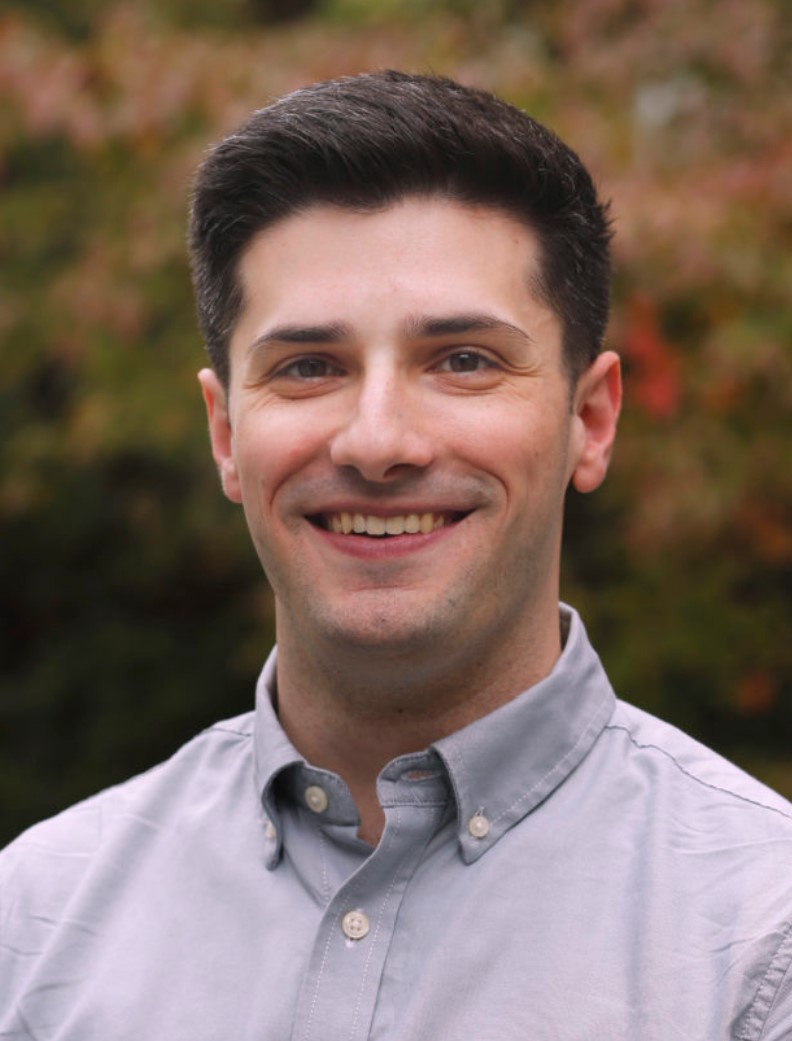
Eric Lepowsky
Graduate Student, Princeton University
Eric Lepowsky is a Ph.D. student and NSF Graduate Research Fellow in the Mechanical and Aerospace Engineering Department at Princeton University, where he is advised by Prof. Alexander Glaser and collaborates closely with Prof. Robert Goldston. He is working on the development and characterization of an autonomous mobile robot equipped with directional neutron detectors to carry out selected inspection tasks in different types of facilities to support nuclear safeguards and arms-control verification. Eric’s efforts have included modeling of the detector response and directional sensitivity, as well as algorithm development for localizing an unknown neutron source. His work was recognized with the J. D. Williams Student Paper Award (Divisional Winner in Nonproliferation and Arms Control) at the INMM/ESARDA 2021 Joint Annual Meeting. Eric has also contributed to the development of an inspection protocol and device for confirming the absence of nuclear warheads via passive gamma-ray measurements.
10:15 – 10:30
Destructive and nondestructive analyses of low-burnup low-enriched uranium for the validation of foreign fuel cycle nuclear forensics methodology
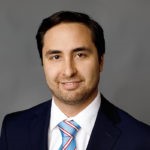
Sean Martinson
Graduate Student, Texas A&M University
During his time with the MTV, Sean’s research has focused on nuclear forensics, nonproliferation, and international safeguards. His first publication was a literature review which examined Monte Carlo neutronics codes and their advantages and disadvantages related to isotopic generation and analysis. After that, work focused on validating MCNP and its prediction of LEU UO2 fuel burn-up in a nuclear research reactor, the Missouri University Research Reactor (MURR). The MCNP simulation was modeled after an actual irradiation campaign done at MURR this past 2021 summer. In fall of 2021, Sean performed PUREX separations, nondestructive (gamma spectrometry) and destructive (mass spectrometry) assay measurements. The experimental results will be compared with those from the MCNP simulation. Additionally, a collaboration with NEN-1 of LANL began in fall 2021 and will continue into 2022. The collaboration involves NEN-1’s Decay Energy Spectroscopy (DES) and Texas A&M University’s irradiated actinide-bearing samples for nuclear forensics and safeguards measurements. Finally, all of this experimental work will provide additional data support for two nuclear forensics methods developed here at Texas A&M University, namely, the Maximum Likelihood Method and the Machine Learning algorithm. Both methods take analytical measurements from interdicted nuclear material and provide reactor-type attribution, burn-up quantification, and time-since-irradiation.
10:50 – 11:05
Uncertainty quantification of the spherical optical model in fission fragment de-excitation
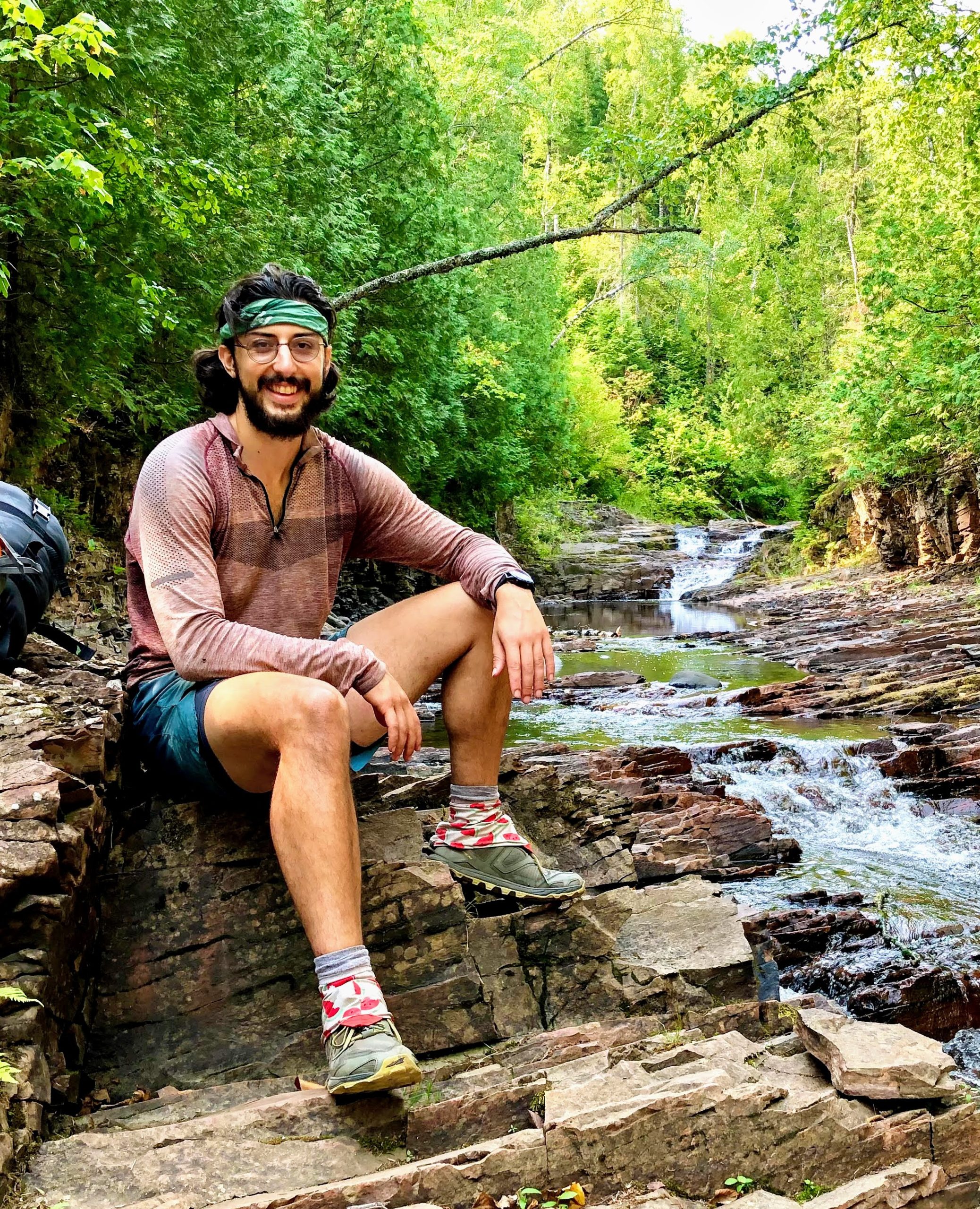
Kyle Beyer
Graduate Student, University of Michigan
Kyle is working on uncertainty quantification in fission models, currently focusing on the optical model for neutron emission from fission fragments. The optical model is a phenomenological technique for simulating quantum scattering problems that represents interactions as a complex mean-field potential, with dozens of parameters fit to neutron elastic scattering data. It is unknown how well this model extrapolates to neutron rich isotopes common in fission fragments, for which no experimental data is available. This project has implications in nuclear non-proliferation, where fission observables are important for special nuclear material detection and quantification, and potentially to open physics problems including fission fragment angular momentum removal. Kyle is also interested in emulators and machine learning techniques to accelerate UQ, as well as radiation transport and detection, and quantum scattering theory.
11:05 – 11:20
Uncertainty analysis of near-field antineutrino-based safeguards
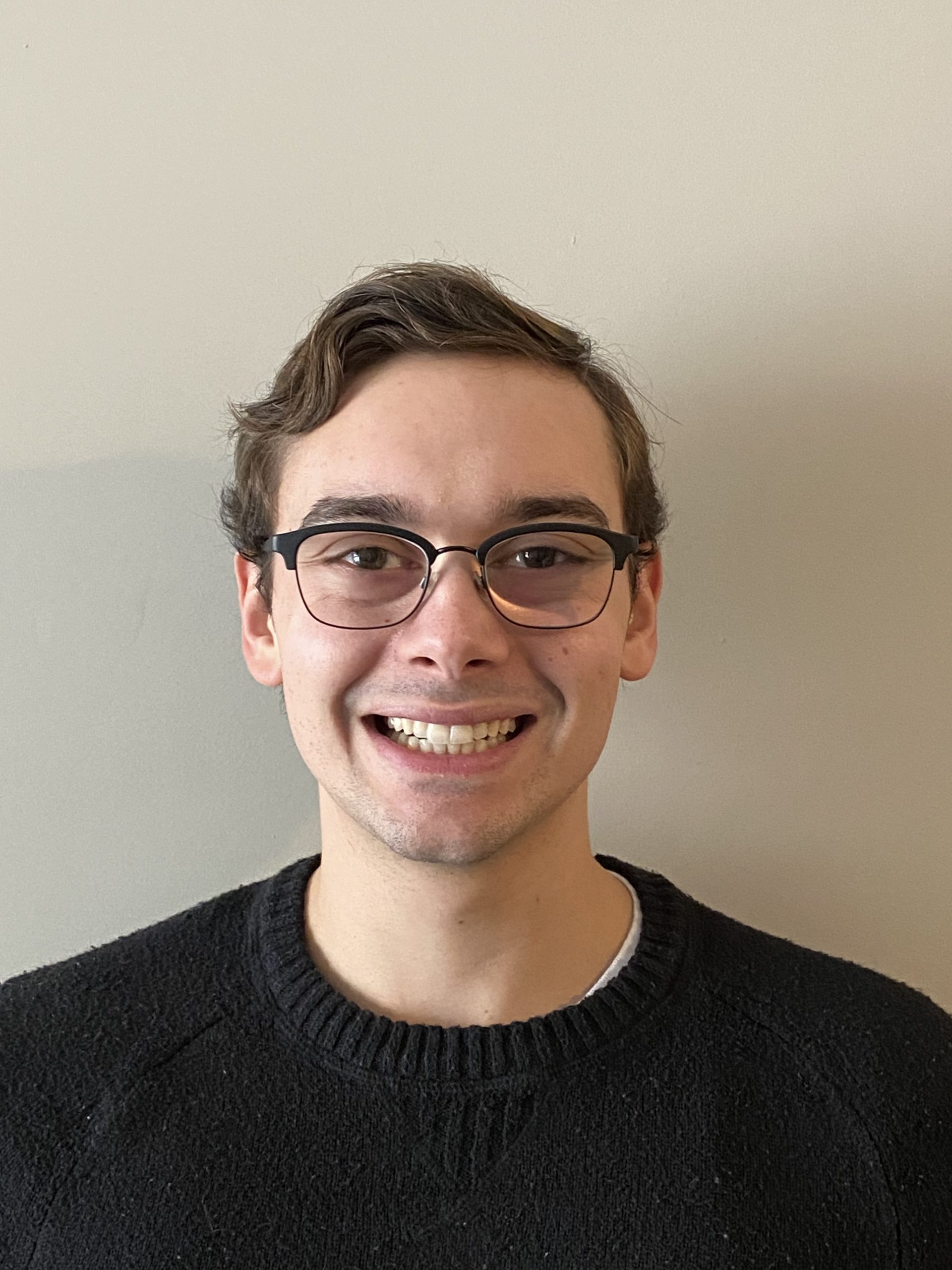
Matthew Dunbrack
Graduate Student, Georgia Institute of Technology
Matthew is primarily focused on utilizing modern machine learning techniques to improve nuclear nonproliferation monitoring technologies. His current research involves analyzing and improving the nonproliferation safeguards power of near-field antineutrino detection systems for nuclear reactor monitoring. The proposed system, the Reactor Evaluation Through Inspection of Near-field Antineutrinos (RETINA) system, utilizes simulated reactor spectra to verify the fissile inventory of actual reactors. Through the Consortium of Monitoring, Technology, and Verification, Matthew continues to improve this system through machine learning methods.
11:20 – 11:35
Active neutron multiplicity counting of kilogram quantities of highly enriched uranium
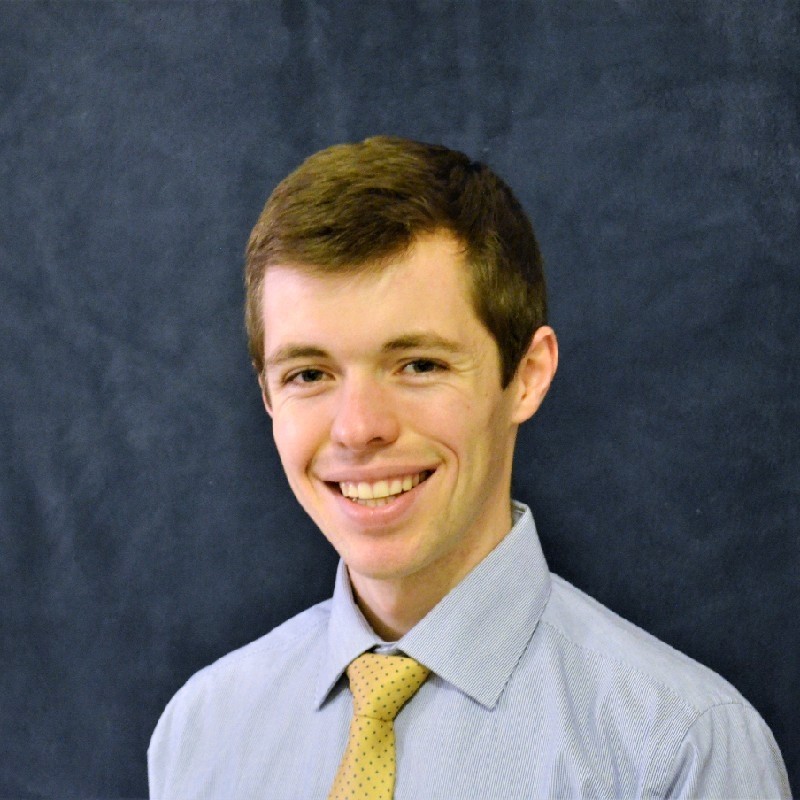
Flynn Darby
Graduate Student, University of Michigan
Flynn joined DNNG as an MTV associate in January 2020. His research focused on rossi-alpha measurements for subcritical fission assemblies. He earned his masters degree in December 2020 and continued with DNNG as an MTV fellow PhD candidate. He has expanded his focus to fast neutron multiplicity counting using organic scintillators.
11:35 – 13:45
Poster overview and reception (even-numbered)
#2: Advancements in coded aperture imaging for CdZnTe detectors

Alexander Rice
Graduate Student, University of Michigan
Alexander earned his B.S. in Nuclear Engineering from the University of Florida in 2019 and is currently pursuing a PhD. in the Department of Nuclear Engineering and Radiological Sciences at the University of Michigan. Currently Alexander’s research focuses on improving gamma-ray imaging using 3-D position-sensitive pixelated CdZnTe. Alexander uses a variety of imaging methods including Compton imaging, coded aperture imaging, and time-encoded imaging.
#4: Machine learning based reconstruction of antineutrinos in Water-Cherenkov detectors
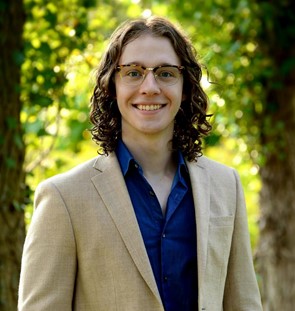
Garrett Wendel
Graduate Student, Pennsylvania State University
Garrett’s research focuses on using deep-learning, likelihood-free inference techniques to reconstruct low energy anti-neutrino inverse beta decay events in the AIT-WATCHMAN water-Cherenkov detector. With this approach he aims to improve the resolution of neutrino reconstruction through inclusion of all available event parameters, dramatically simplify the reconstruction tuning process for the AIT-WATCHMAN detector, and generalize the resulting techniques for use in other neutrino detectors.
#6: Detection of prompt photofission neutrons from U-238 with a He-4 scintillation detector
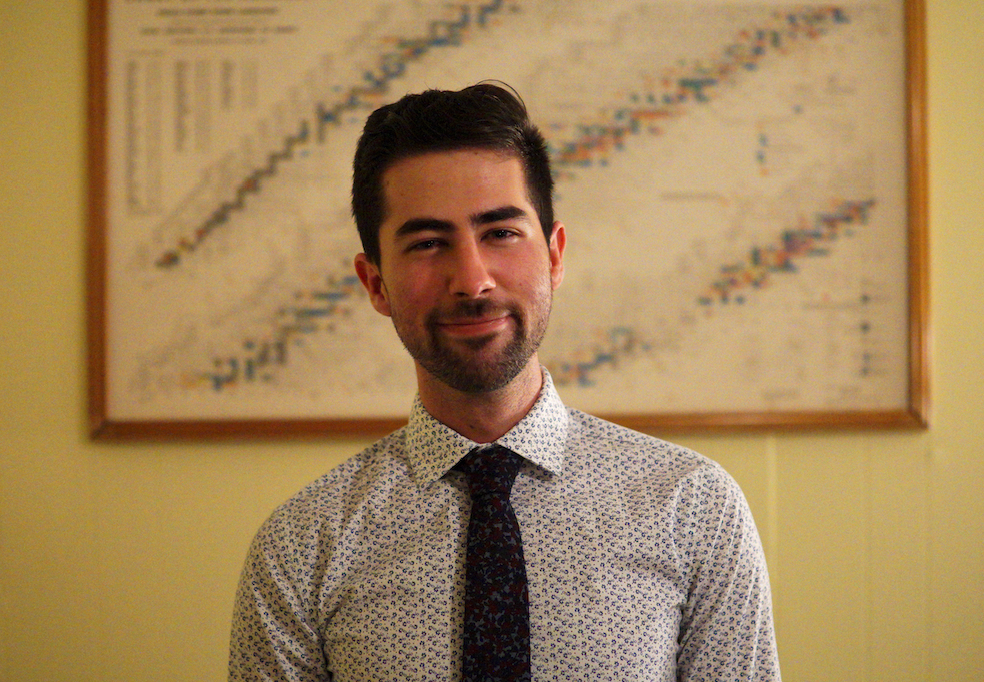
Oskar Searfus
Graduate Student, University of Michigan
As a PhD student at the University of Michigan, Oskar’s research has focused on novel methods of fast neutron measurement and novel fast neutron signatures for the detection and characterization of illicit nuclear materials. He has performed delayed neutron measurements on HEU and Np assemblies at the Device Assembly Facility, working to leverage delayed neutron signatures beyond the simple neutron emission time profile. Furthermore, Oskar studies He-4 as a detection medium for fast neutrons, exploring high-pressure He-4 as a “gamma-blind” scintillator, and developing a He-4 ionization chamber for monitoring of spent nuclear fuel in dry storage.
#8: Event-by-event neutron gamma correlations in Pu-239
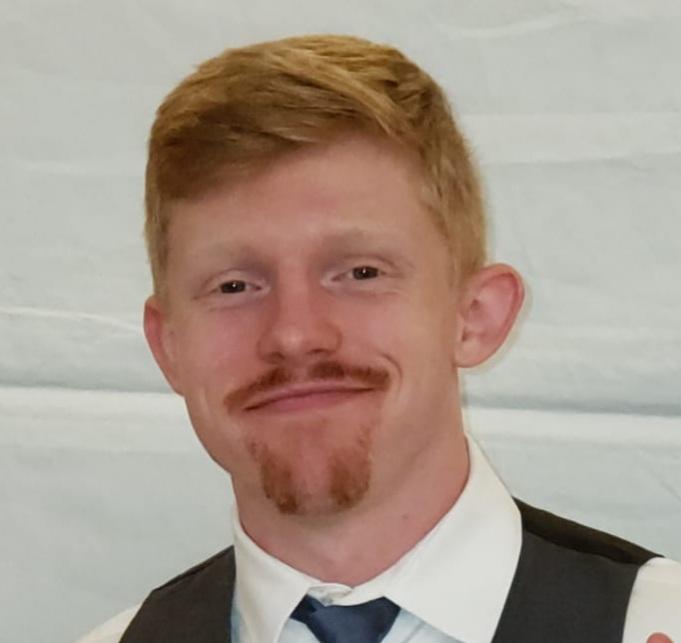
James Baker, Jr.
Undergraduate Student, University of Michigan
James is a junior in the nuclear engineering department at the University of Michigan. He has been working with the MTV consortium since January of 2021 on angular momentum in neutron induced fission of Pu-239. James plans to obtain his master’s degree in the nuclear field, but has not yet decided on what his future specialization will be. Outside of academics, James is heavily involved in the ultimate frisbee team at U of M and plans to continue playing until he graduates.
#10: Evaluating the ability of an artificial neural network system to detect shielded depleted uranium in intense photon fields
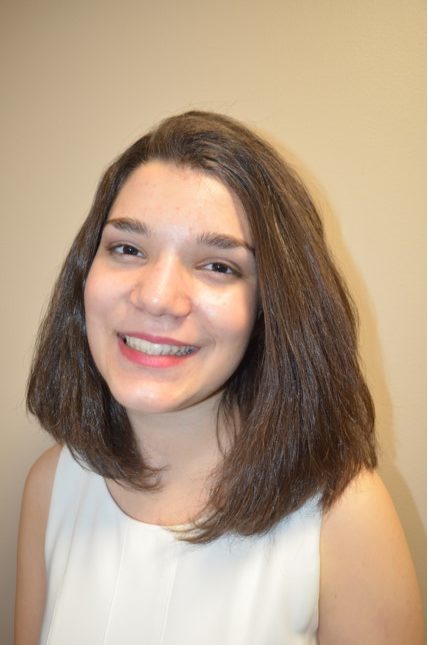
Tessa Maurer
Graduate Student, University of Michigan
Tessa Maurer is in her senior year at the University of Michigan in the Department of Nuclear Engineering and Radiological Sciences. Upon completing her degree, she hopes to continue onto graduate school in nuclear engineering. Her current research interests include machine learning strategies for nonproliferation applications in active interrogation and material detections.
#12: Time resolution of organic glass scintillators in various geometries

Leah Clark
Graduate Student, University of Michigan
Leah Clark joined the MTV Consortium in 2019 when she entered the Nuclear Engineering Ph. D. program at the University of Michigan. She earned her undergraduate degree in Physics at the University of WI-La Crosse. Now, she works with Prof. Pozzi in radiation detection and nuclear explosion monitoring. Her research uses a new type of scintillating material, organic glass, that can be melt-cast into desired shapes, making it an attractive alternative to other materials that require more complex procedures. Currently, she is characterizing the material for design preparation in radioactive xenon detection. She has presented her work at two MTV Workshops and one University Program Review during her time in the consortium.
#14: Neural network applications toward accelerated neutral particle transport solutions
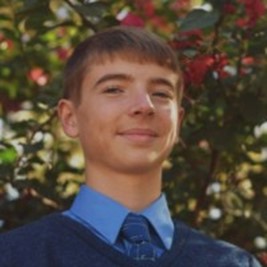
Lincoln Johnston
Graduate Student, University of Michigan
Lincoln Johnston is a first-year doctoral student in the NERS department at the University of Michigan, where he also completed his undergraduate degree in nuclear engineering. His focus is on the computational modeling of fission reactors, and is currently working under Professor Brian Kiedrowski on methods of applying neural networks to the solution of transport problems.
#16: Correlations between gamma-ray multiplicity and incident neutron energy in 239Pu(n,f)
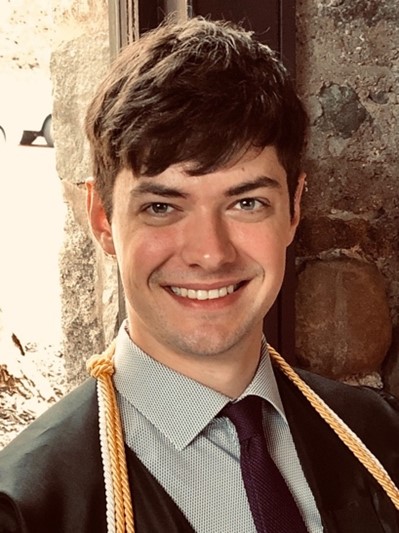
Nathan Giha
Graduate Student, University of Michigan
Nathan Giha is a third-year PhD student at the University of Michigan, studying nuclear fission. His current research focuses on measuring prompt fission neutrons and gamma rays to probe the initial conditions of fission fragments.
#18: Comparison of two laser systems for monitoring physiological changes in moss (Thuidium plicatile) due to metal contamination using laser-induced fluorescence (LIF)

Haley Currier
Undergraduate Student, University of Hawaiʻi
Haley is an undergraduate student at University of Hawai’i at Manoa studying Earth Science and Astrophysics. After graduation, she plans to get her masters in geophysics in order to apply her passion for physics to understanding the physical processes and properties of Earth and neighboring planets. She is currently working on projects that contribute to cutting-edge techniques in physics and remote sensing to gain insight into environmental monitoring and ways to improve laser’s capabilities and applications for field use
#20: Reactor lifetime predictions from antineutrino yields

Jonah Cullen
Graduate Student, Georgia Institute of Technology
Jonah Cullen is a master’s student at Georgia Institute of Technology studying nuclear engineering. His research focuses on machine learning applications in radiation detection for anomaly detection in treaty verification for international nonproliferation. He is a passionate musician and finds joy in the balance of art and science.
#22: Verification of upcoming MCNP features for estimating nuclear data sensitivities in fixed source simulations
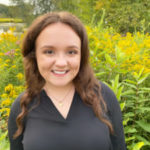
Juliann Lamproe
Graduate Student, University of Michigan
Juliann graduated from Texas A&M University, with a bachelor’s degree in Nuclear Engineering and a certificate in Safety Engineering in Spring 2020. She joined the DNNG group in Fall 2020. During her undergraduate studies, she spent multiple summers working with Los Alamos National Laboratory, which is where her current research began. Her research focuses on the sensitivities associated with neutron noise measurements.
#24: Predicting angular momentum of fission fragments using machine learning
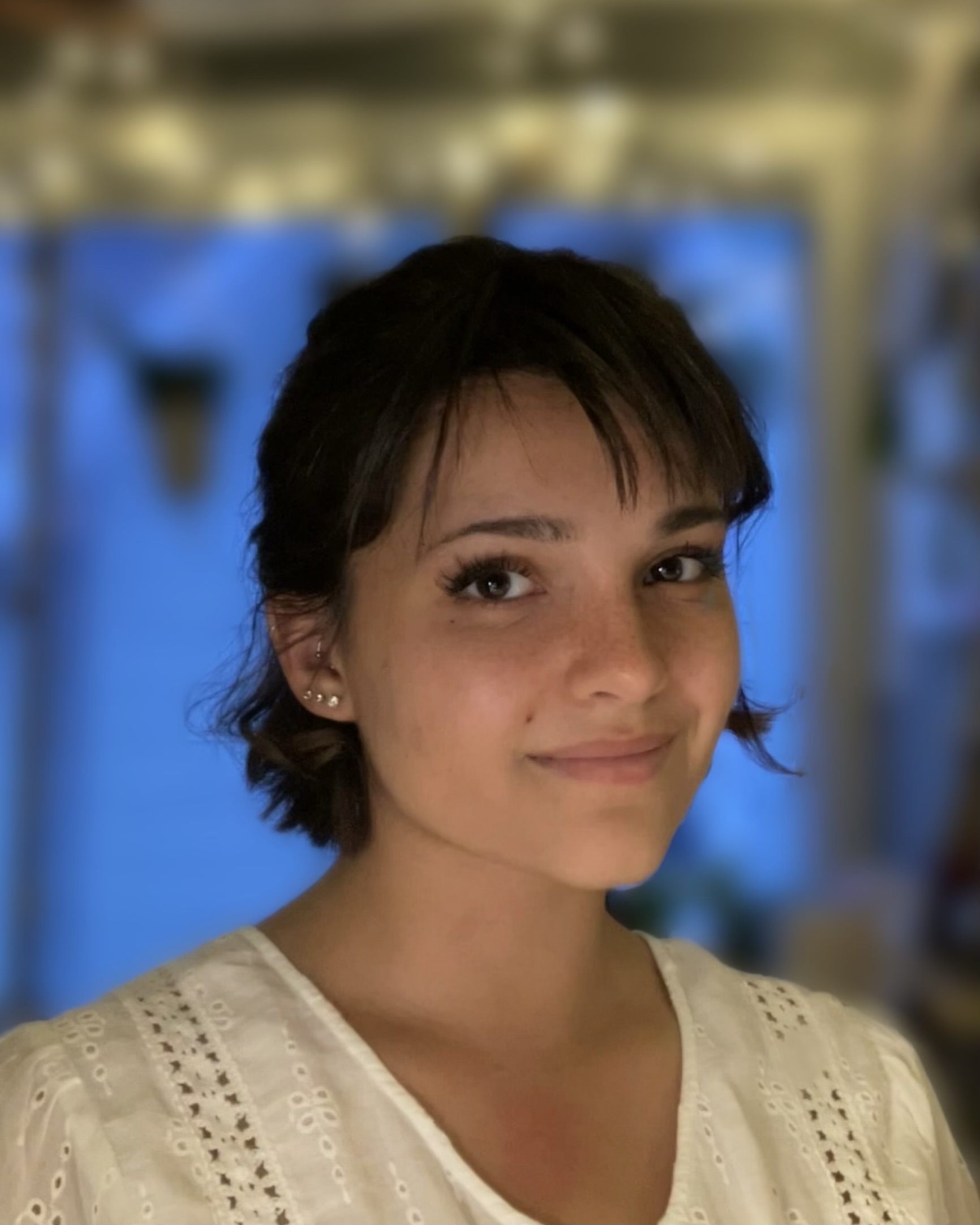
Isabel Hernandez
Undergraduate Student, University of Michigan
Isabel joined DNNG the fall of 2018 as a CVT Undergraduate Fellow. She is working toward her Bachelor’s Degree in Nuclear Engineering and Radiological Sciences with a minor in Computer Science. Her undergraduate research includes analyzing correlations in fission products for simulated and experimental data, and incorporating machine learning to better understand fission processes.
#26: Opaque scintillators for topological reconstruction

Andrew Wilhelm
Graduate Student, University of Michigan
Andrew Wilhelm is a Ph.D. candidate in nuclear engineering at the University of Michigan, and a member of the Applied Nuclear Science Group. Additionally, he is a U.S. Army nuclear and counterproliferation officer. Upon completing his degree, Andrew will join the faculty of the United States Military Academy at West Point Department of Physics and Nuclear Engineering. His research interests include neutron and gamma-ray spectroscopy, particle-type identification, machine learning, and solving inverse problems.
#28: A fully immersive virtual reality game for radiation protection education
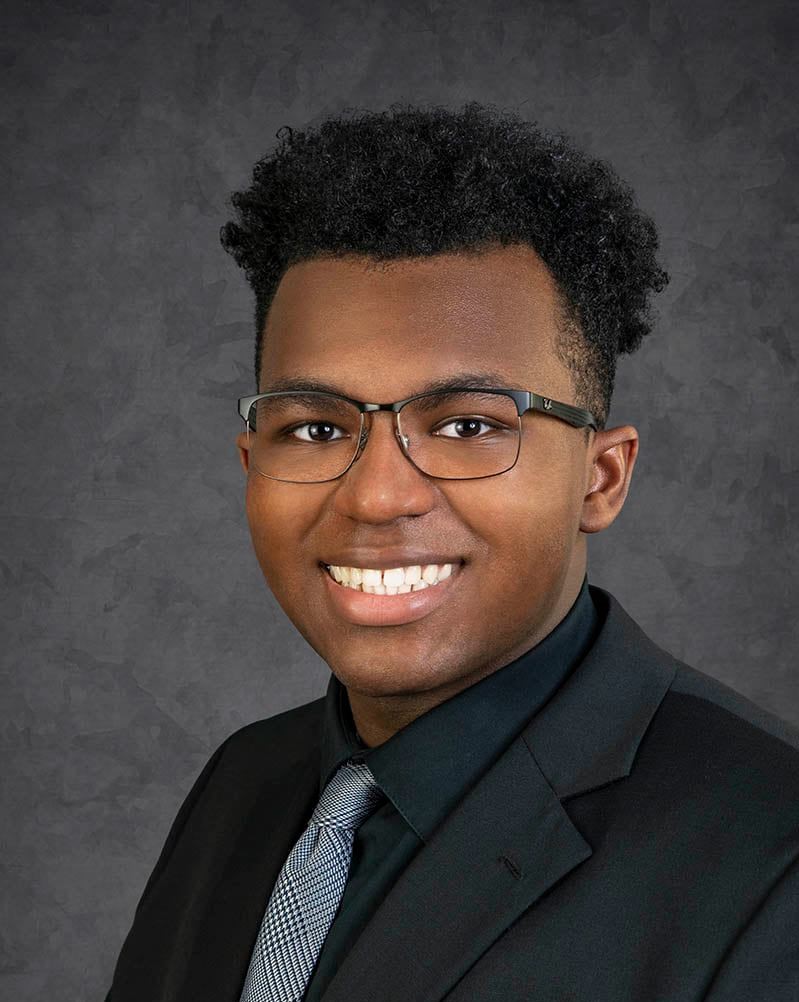
Michael Robinson
Undergraduate Student, University of Michigan
Michael Robinson is currently a freshman in Robotics at the University of Michigan. He researches in Dr. Kimberlee Kearfott’s Radiological Health Engineering lab. He has an interest in robotics and 3D animation. Michael is currently considering pursuing a Master’s in Robotics. In his spare time he enjoys Tabletop games like Dungeons & Dragons and Lancer.
#30: Extended reality training for a high radiation area protocol
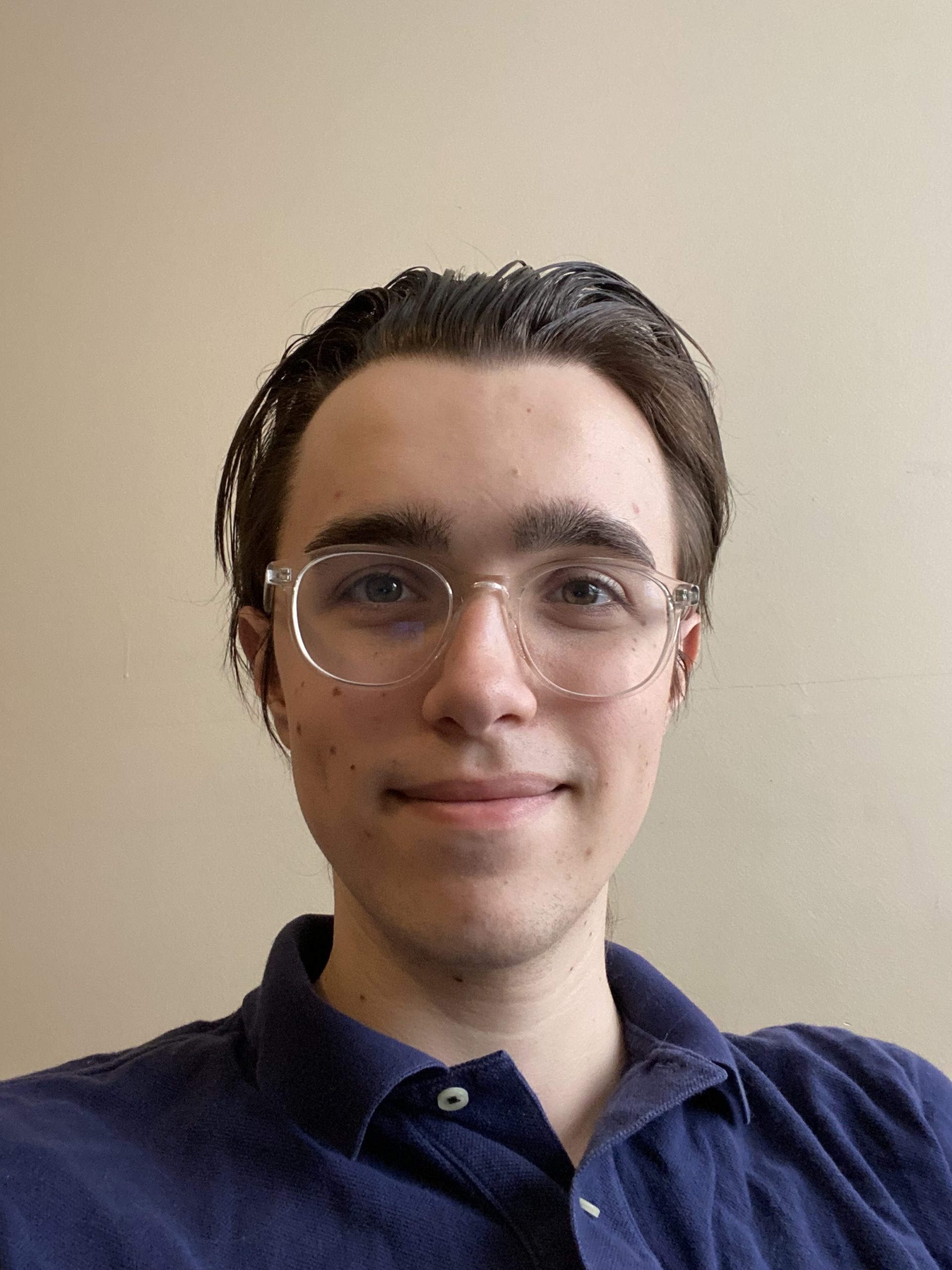
Colin Stewart
Undergraduate Student, University of Michigan
Colin Stewart is a junior pursuing a bachelors in Engineering Physics at the University of Michigan. He works in the Cesium facility team under Dr. Kimberlee Kearfott in the Radiological Health Engineering Lab. Post-graduation, Colin wishes to pursue graduate school in physics. In his free time, Colin enjoys cooking and reading.
#32: Small-scale isotopic identification: neutron resonance transmission analysis using a linac versus fusion source
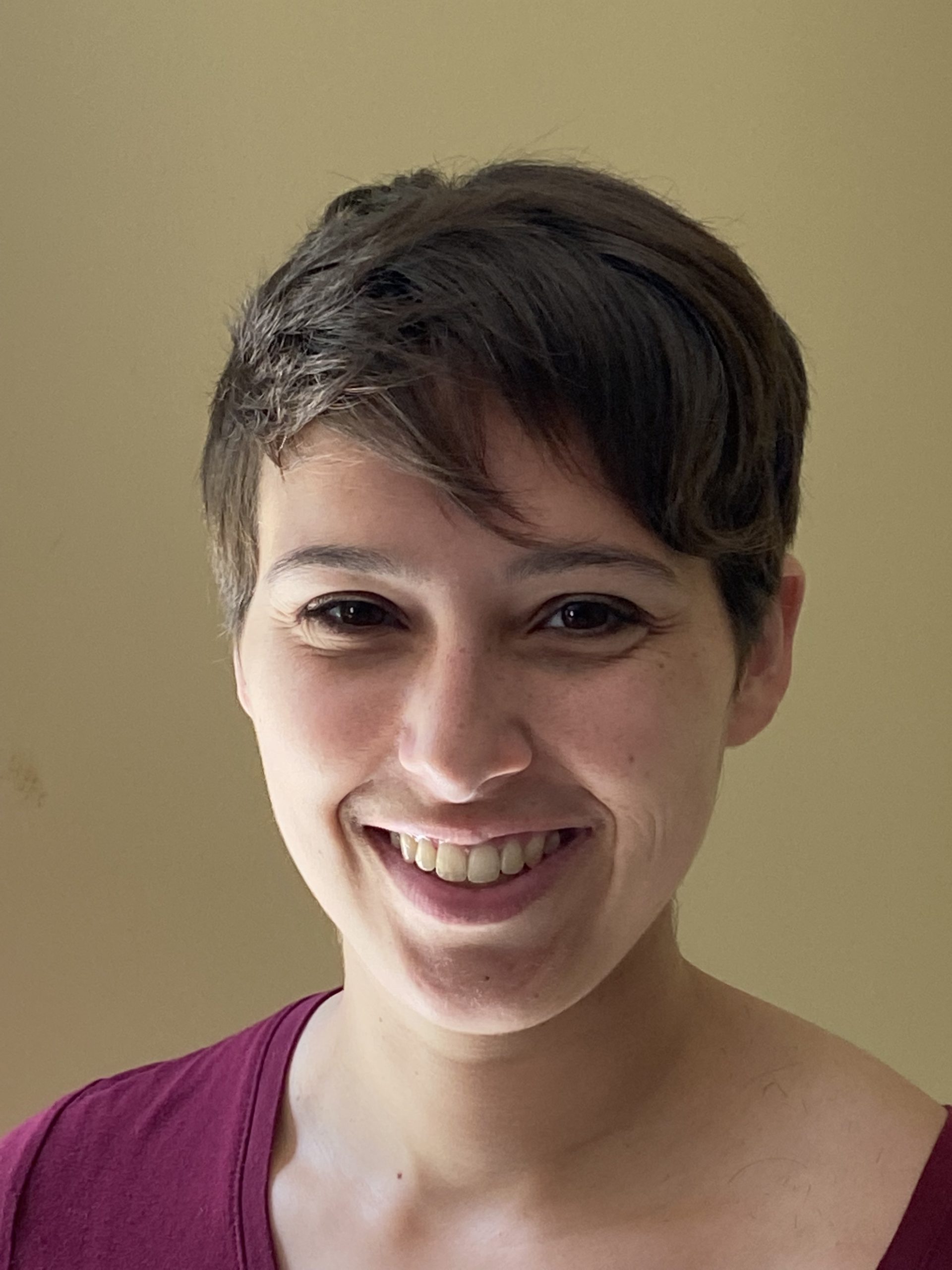
Peninah Levine
Graduate Student, Massachusetts Institute of Technology
Peninah (Nina) Levine is a dual B.S./M.S. candidate in Nuclear Science and Engineering at MIT with a minor in Public Policy. After two years in the Laboratory for Nuclear Science as an undergraduate researcher, she joined the Laboratory for Applied Nuclear Physics her junior year. Nina has spent one summer interning at Lawrence Livermore in High Energy Density Physics. She currently works on developing simpler, mobile systems for neutron resonant transmission analysis to improve understanding of isotopic compositions for warhead verification and fuel enrichment analysis.
#36: An affordable radiation weather station for high school outreach
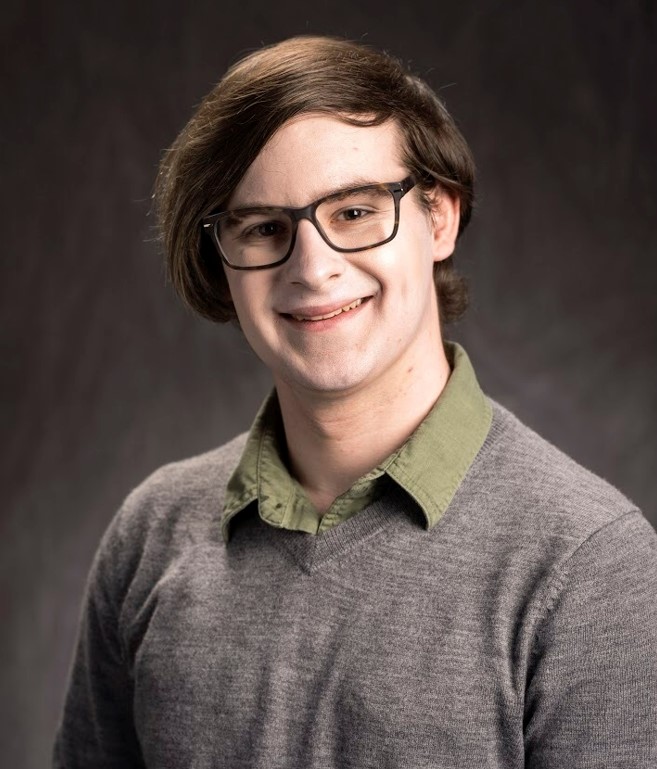
Andrew Kent
Undergraduate Student, University of Michigan
Andrew Kent is an undergraduate junior studying computer engineering with a focus in cyber and physical securities. He was an MTV fellow in 2021 and has been working in nuclear engineering research since 2019. This research has caused him to gain an interest in nuclear engineering, he has been taking classes and looking at the possibility of a career in the field. In his free time, he likes to build prop replicas and he is a part of the archery club at the University of Michigan.
#38: Plenoptic muon imaging of various test setups
Dominic Lioce
Undergraduate Student, University of New Mexico
14:30 – 14:45
Superheated droplet detector response to the source system for zero-knowledge verification
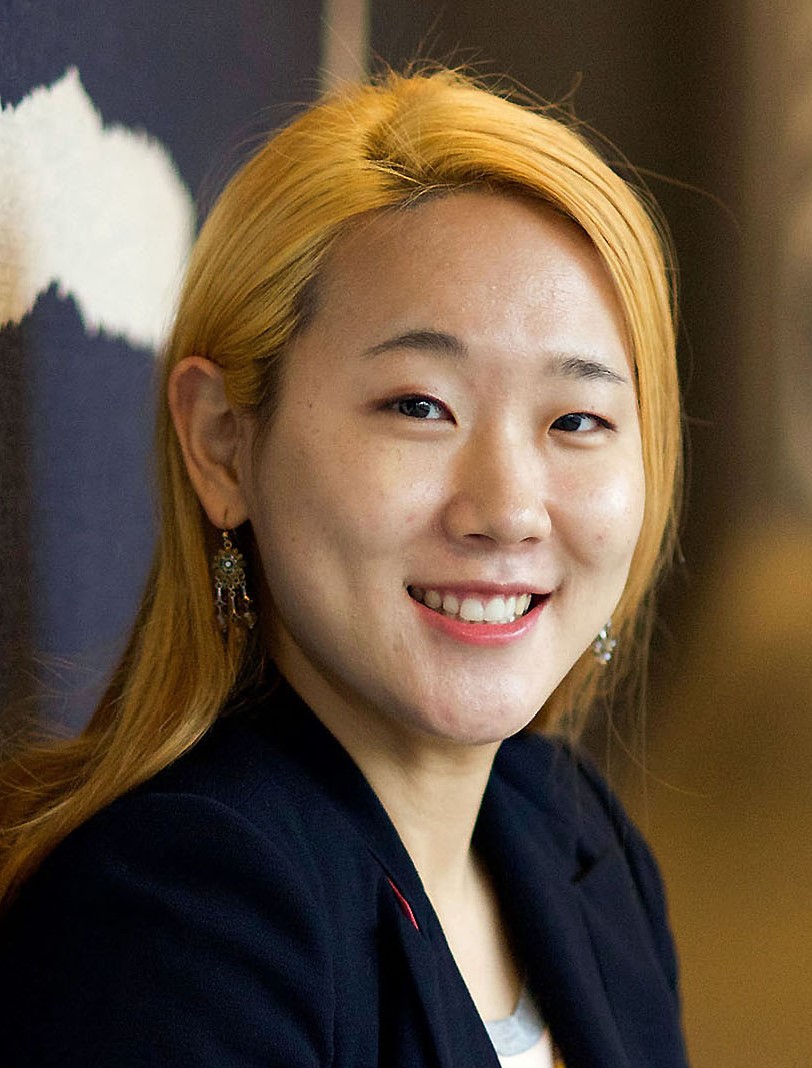
Jihye Jeon
Graduate Student, Princeton University
Jihye Jeon is a PhD student in the Department of Mechanical and Aerospace Engineering at Princeton University. Prior to coming to Princeton, Jihye worked at the Korea Institute of Nuclear Nonproliferation and Control (KINAC), analyzing international nuclear safeguards and security policy. Jihye graduated from Seoul National University with a BS in Nuclear Engineering and a BA in English Language and Literature, and from Sejong University with an MS in Nuclear Engineering focused on radiation measurement and applications. Her research interests are in developing verification technologies for special nuclear materials. She is also interested in radiation detection application in various scenarios for nuclear disarmament and nonproliferation purposes.

Milton Garcés
Faculty, University of Hawaiʻi
Dr. Garcés specializes in the study of global infrasound from man-made and geophysical sources in the atmosphere, ocean, and solid Earth. He founded the Infrasound Laboratory of the University of Hawaiʻi, and is a collaborating scientist with the Earth Observatory of Singapore. Dr. Garcés operates International Monitoring System stations in Hawaiʻi and Palau, as well as regional stations in Hawaiʻi. Recent projects include the preparation of the CTBTO Infrasound Technology Roadmap, the study of infrasound from hurricanes, tsunamis, meteors, and high surf, as well as real-time acoustic monitoring of volcanic eruptions.
15:00 – 15:15
Biosensors for detecting nuclear fuel cycle activities in the environment
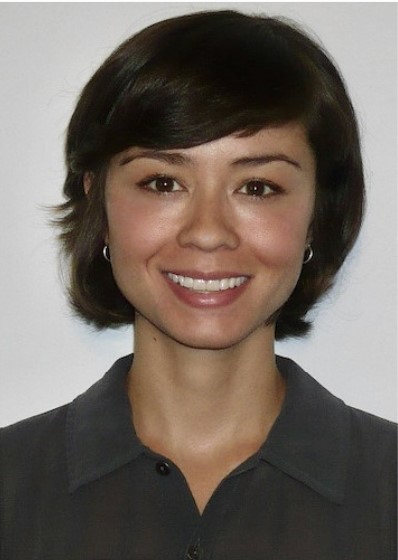
Isis Fukai
Graduate Student, University of Tennessee, Knoxville
Our work explores the fundamental interactions between fuel cycle activities and the environment to characterize microbial-geochemical systems with the potential to facilitate in-situ monitoring and remote detection of proliferation-sensitive fuel cycle activities.
15:15 – 15:30
Towards an improved laser induced fluorescence imaging technique via testing of various laser wavelengths in pursuit of a portable system
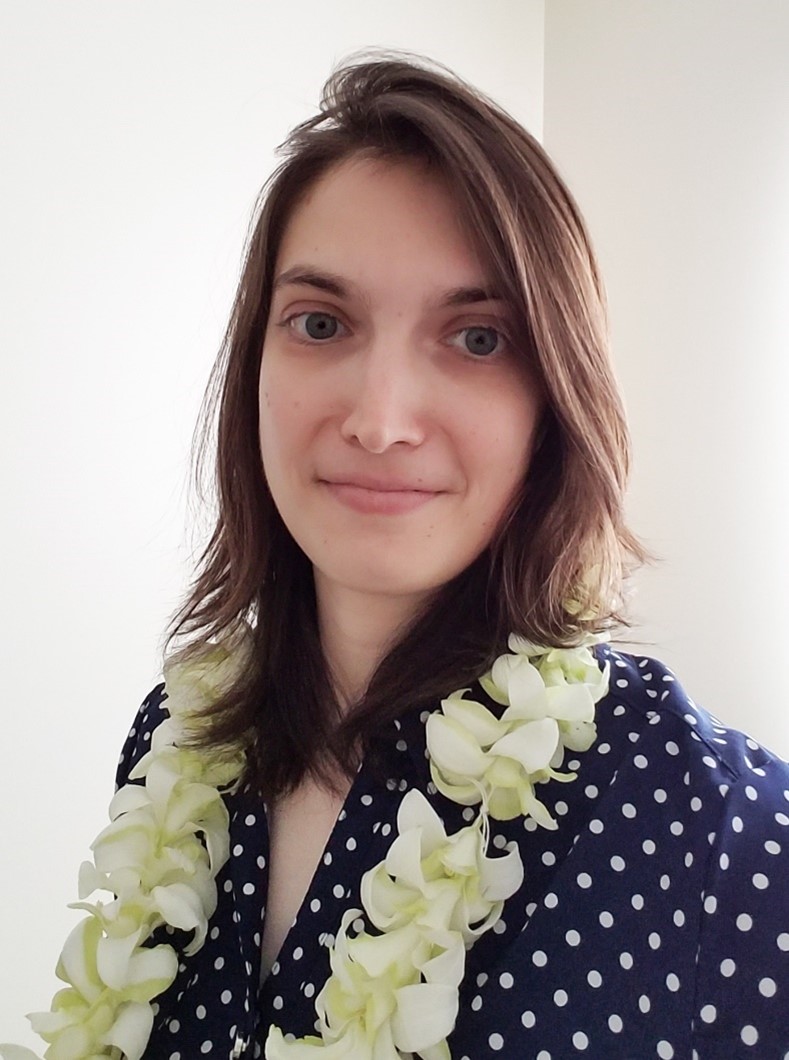
Kelly Truax
Graduate Student, University of Hawaiʻi
Ms. Truax completed a B.F.A. from Missouri State University in 2013 and a B.S. in Professional Geology from Mississippi State University in 2019. She is recognized by the Mississippi State Board of Registered Professional Geologists as a GIT. After joining the MTV Consortium in 2019, she completed her M.S. at the University of Hawaii at Manoa in Earth and Planetary Sciences in 2020 developing a methodology for use of laser induced fluorescence in biota. She is currently continuing her research in the pursuit of a Ph.D. at the University of Hawaii at Manoa. Currently, research focus is interested in the behavior/reactions of atomic or sub-atomic particles in conjunction with varying soil, water, climate, atmosphere, and composition parameters found in the environment. Remote sensing, laser induced fluorescence, image and data analysis, and environmental monitoring are the primary research areas.
15:30 -15:45
Closing remarks and student awards
16:15 – 17:15
Optional Lab tours – University of Michigan, Nuclear Engineering

